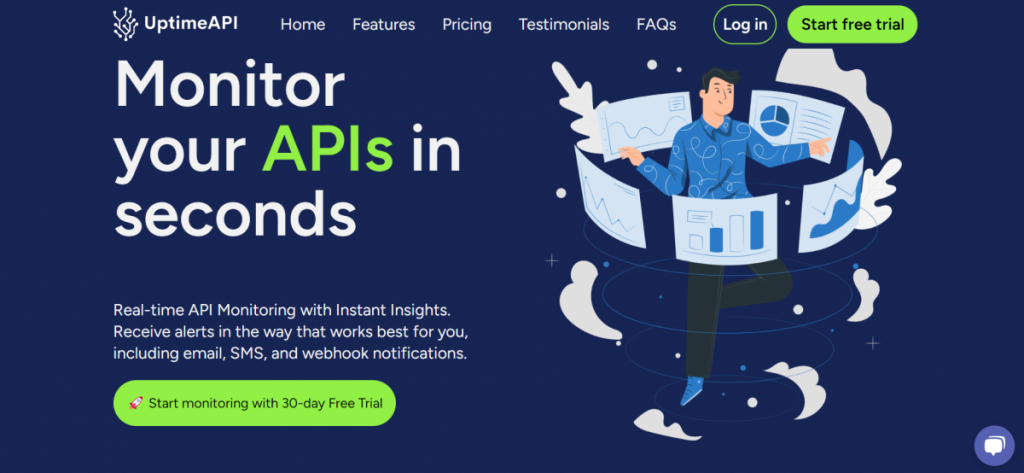In today’s digital age, Application Programming Interfaces (APIs) serve as the lifeblood of modern software systems, facilitating seamless data exchange and functionality across diverse applications. Ensuring the uninterrupted availability of APIs is paramount, making API downtime notifications a critical component of system reliability. In this article, we explore the significance of API uptime and introduce UptimeAPI, a powerful solution designed to tackle API downtime proactively.
The Impact of API Downtime
First and foremost, it’s crucial to comprehend the far-reaching consequences of API downtime. Financial implications are often at the forefront, with businesses experiencing revenue loss due to disrupted services. Moreover, reputation damage can be substantial, eroding customer trust and brand credibility.
Common Causes of API Downtime
To address API downtime effectively, it’s essential to identify its root causes. Server overload, software bugs, and network issues are among the primary culprits. These issues can lead to service interruptions that have a domino effect on interconnected systems.
There are many tools on the web that are the Key For API Downtime Notifications. However, we want to focus on one of those tools, which will decrease the risk of API Downtime. This tool is called Uptime API and we will give you all the details below, in the following text:
Uptime API: The Key For API Downtime Notifications
Uptime API is a web service that allows you to monitor your APIs for downtime and receive notifications when they are unavailable. It is a key for API downtime notifications because it is easy to use, reliable, and provides a variety of features to help you stay informed about the status of your APIs. You can create an account and start monitoring your APIs in minutes. It monitors your APIs 24/7 and sends notifications within minutes of an outage.
Uptime API can monitor APIs of all types, including HTTP, HTTPS, and REST. You can even customize the type of alerts you receive, such as email, SMS, or webhook. You will receive detailed reports on the uptime and performance of your APIs. Another feature is that you can share monitoring data with your team members.
How To Use The Uptime API?
1: Create an account on the Uptime API Website.
2: Complete the required details in the registration form. You can also, register with Google or GitHub.
3: After signing up, you will receive a verification email.
4: Choose one of the 3 available plans (basic, pro, and plus). There is a 30-day free trial period.
5: When you’re done, click on “Monitors” and then click on “New Monitor”. Complete the required data: API’s name, URL, HTTP Method, etc.
6: Finally, click “Create” and the service will monitor the API, by regularly checking the status.
Watch this video:
In the dynamic digital landscape, API uptime is non-negotiable. The power of proactive API monitoring cannot be overstated, and Uptime API emerges as a formidable solution to ensure API reliability. To get started with Uptime API, visit the website and create an account. So, you can start monitoring your APIs in minutes.
Read this interesting post: Use This WhatsApp Phone Number Verification API To Save Time And Money



